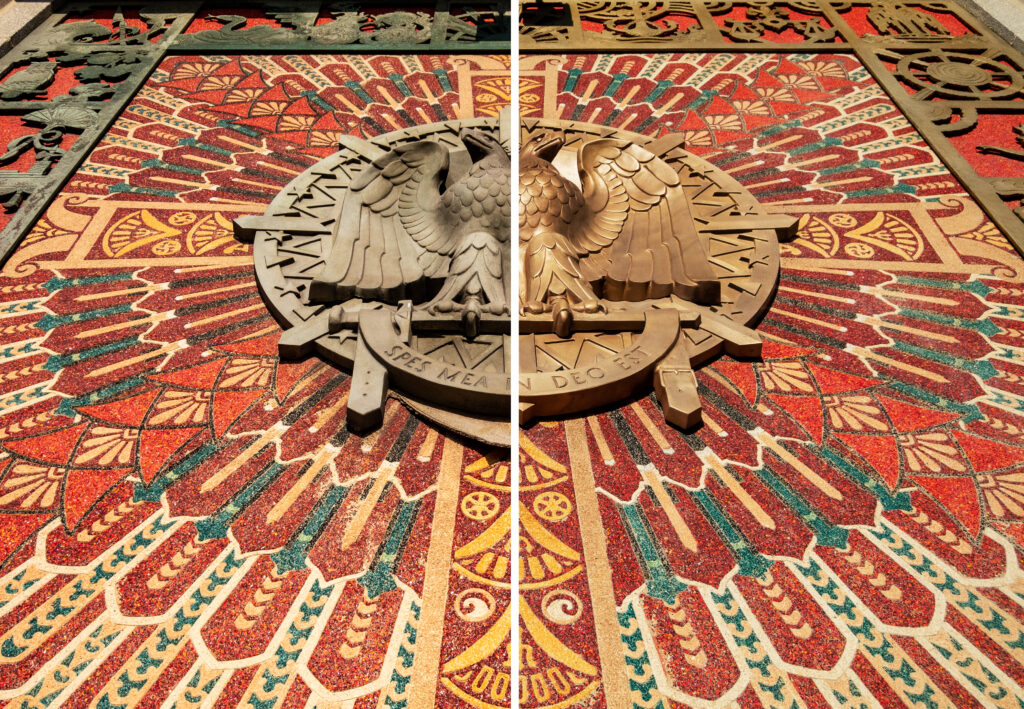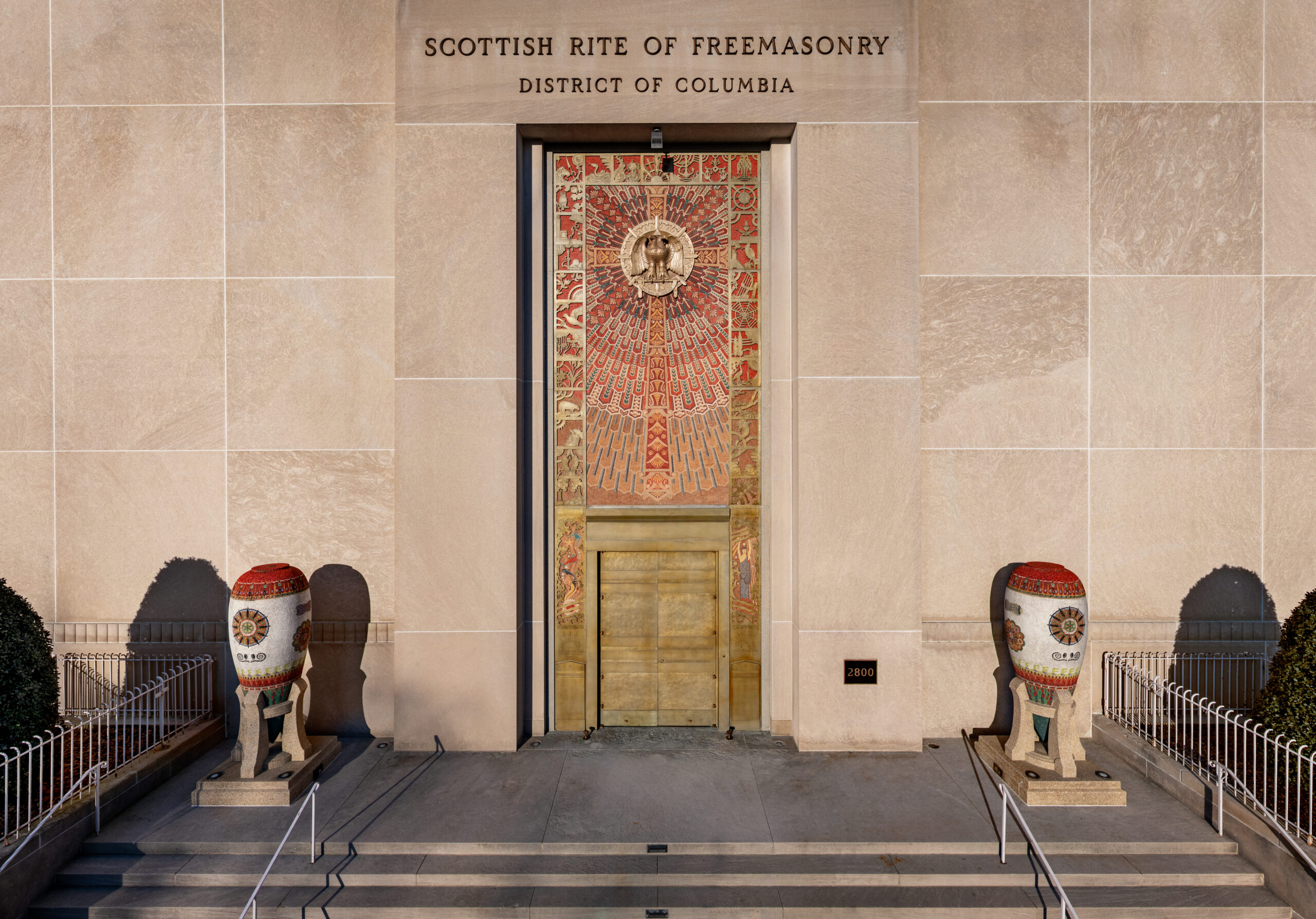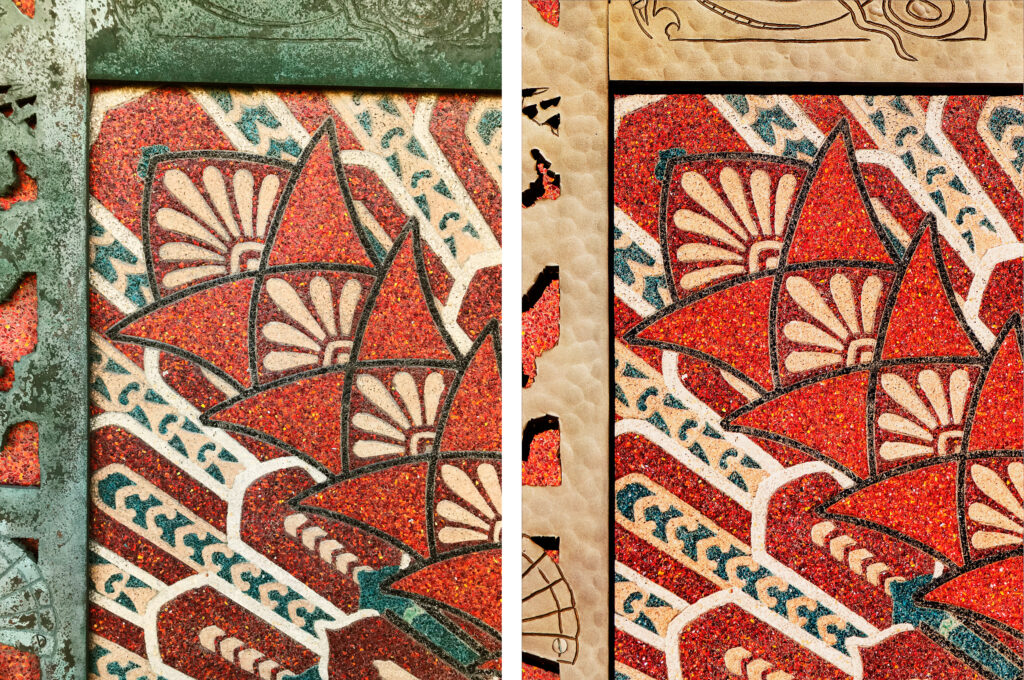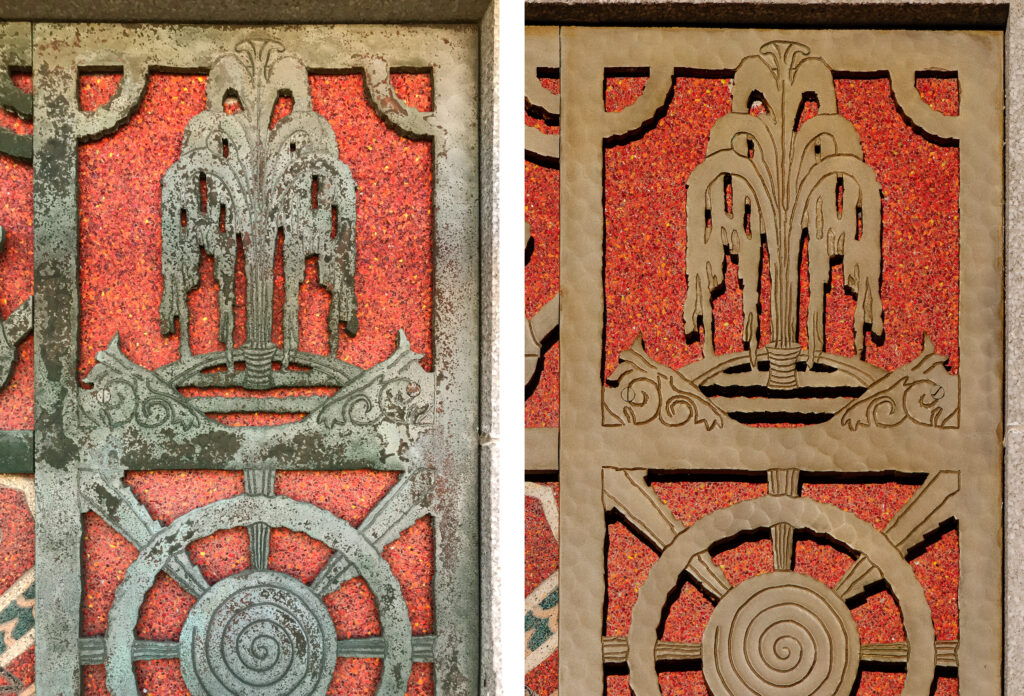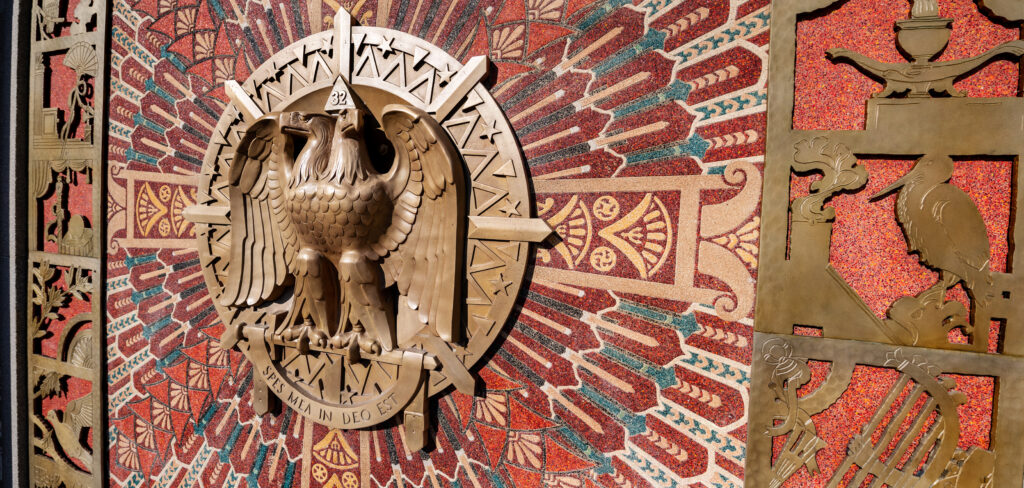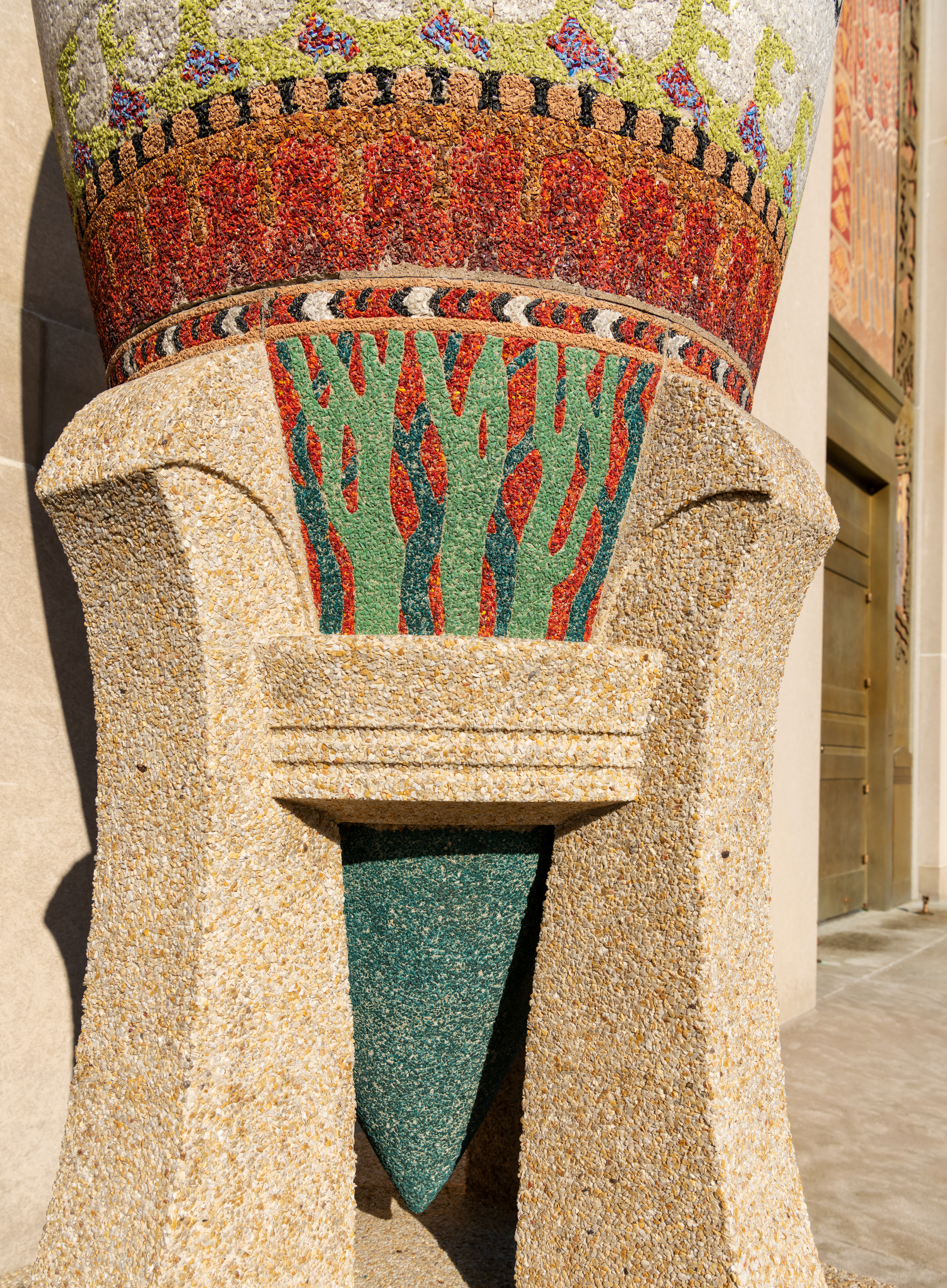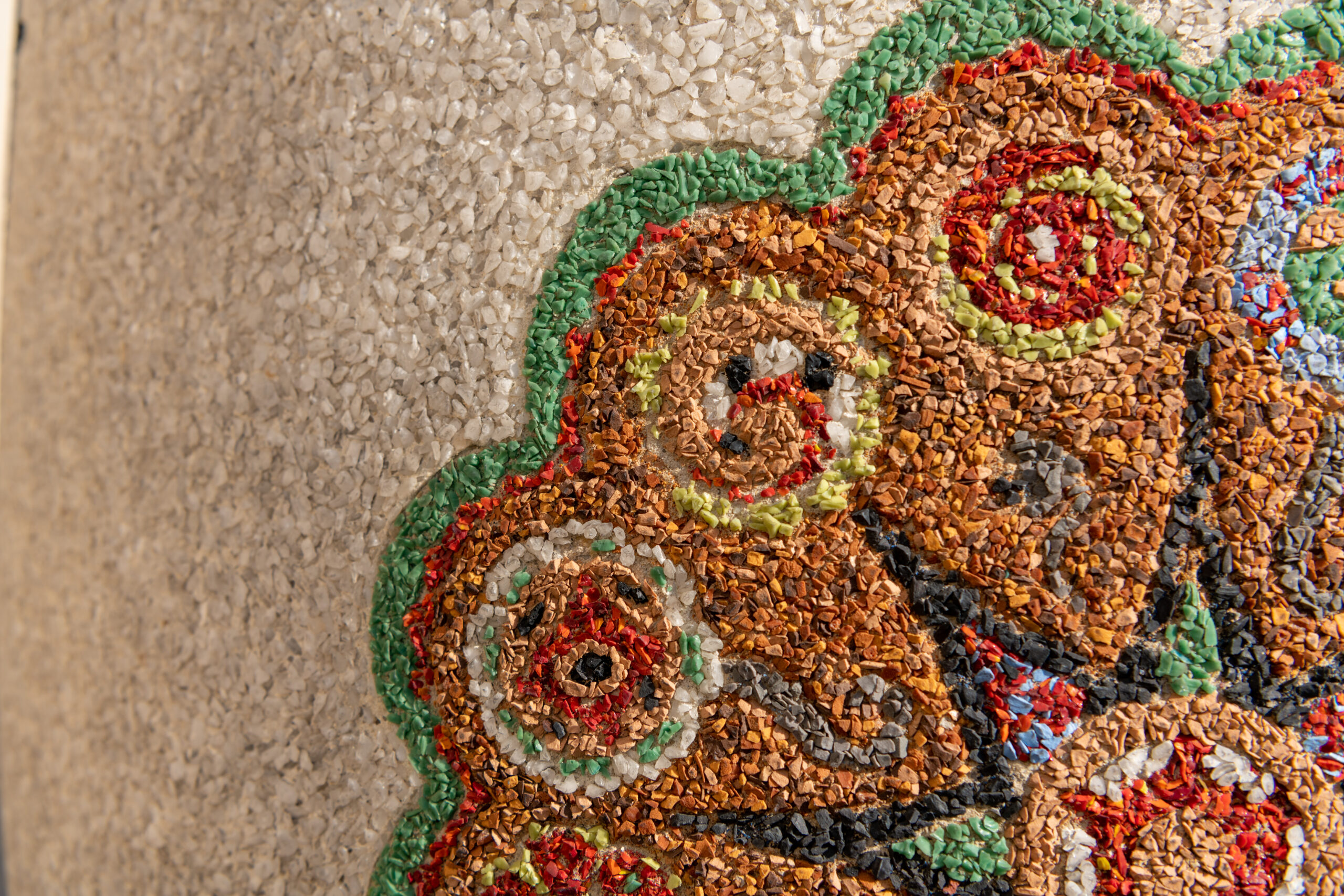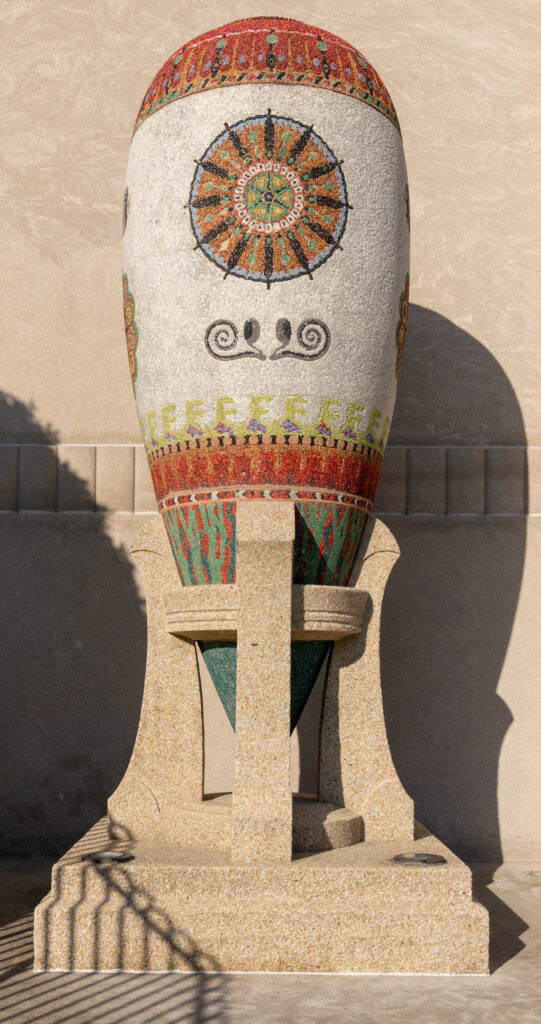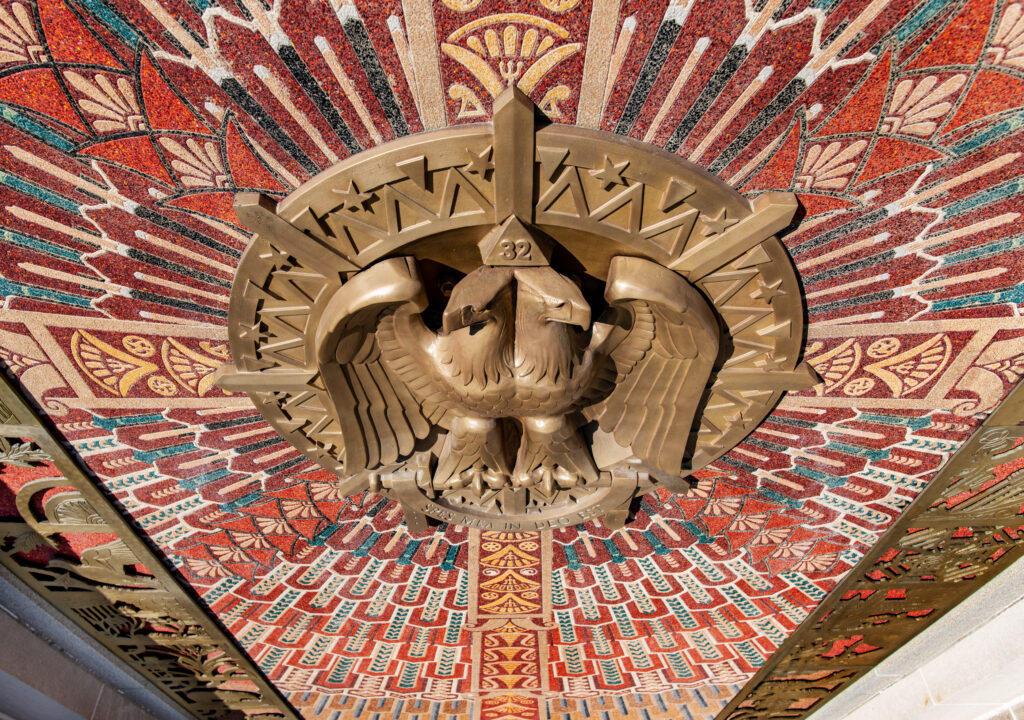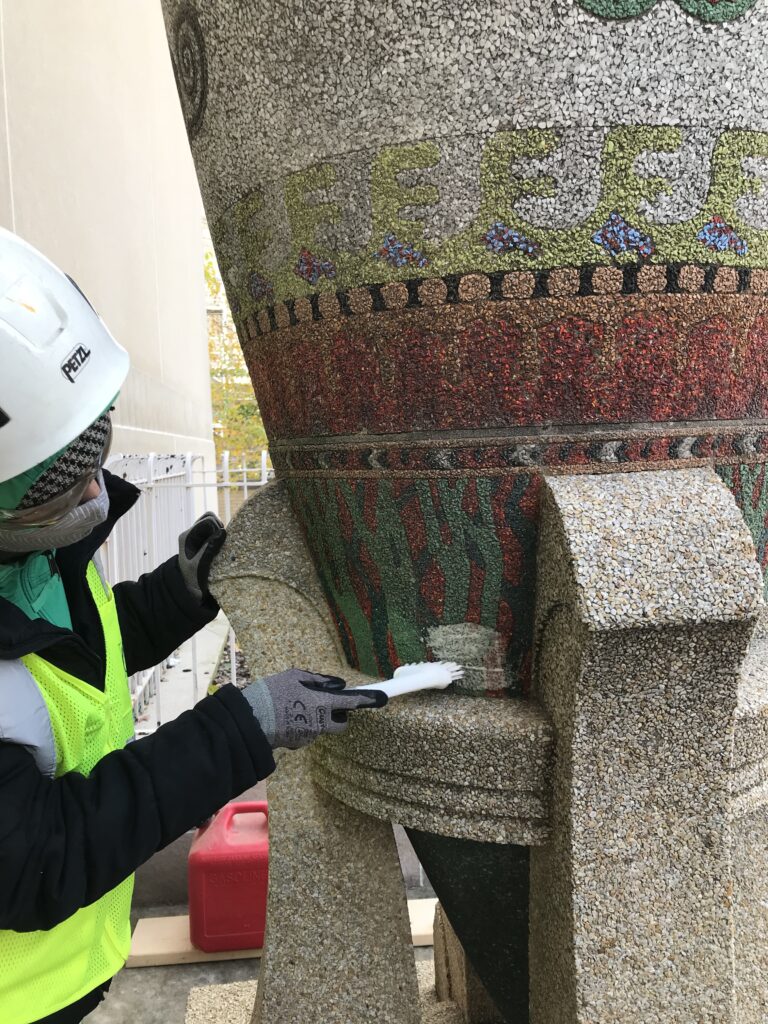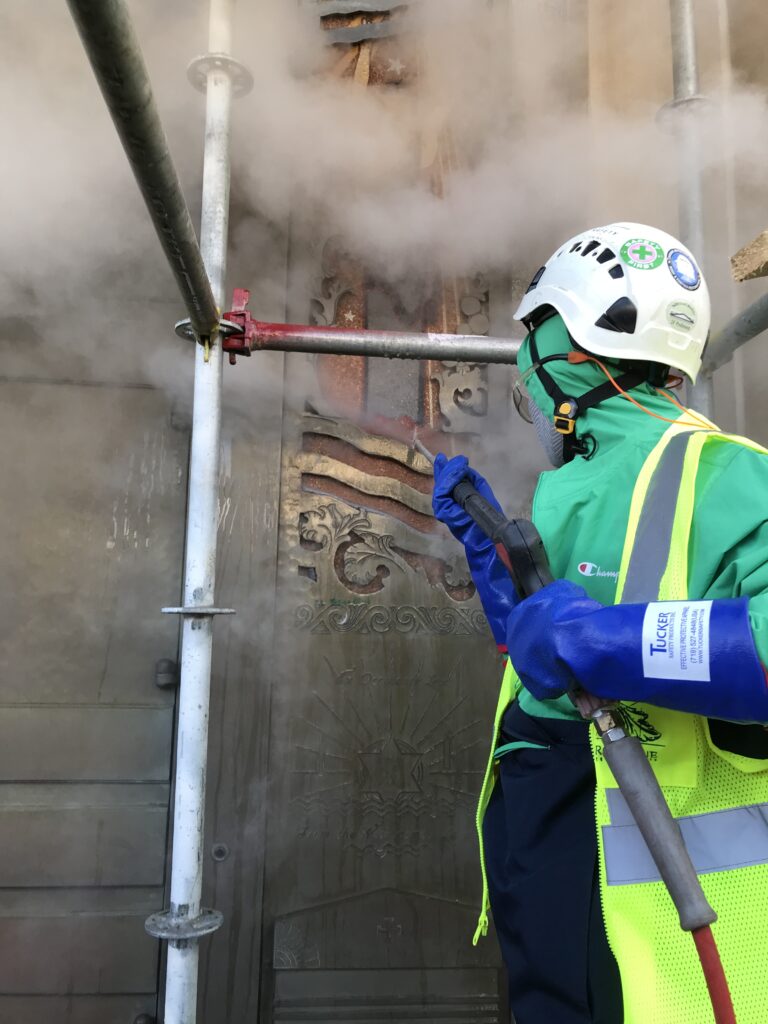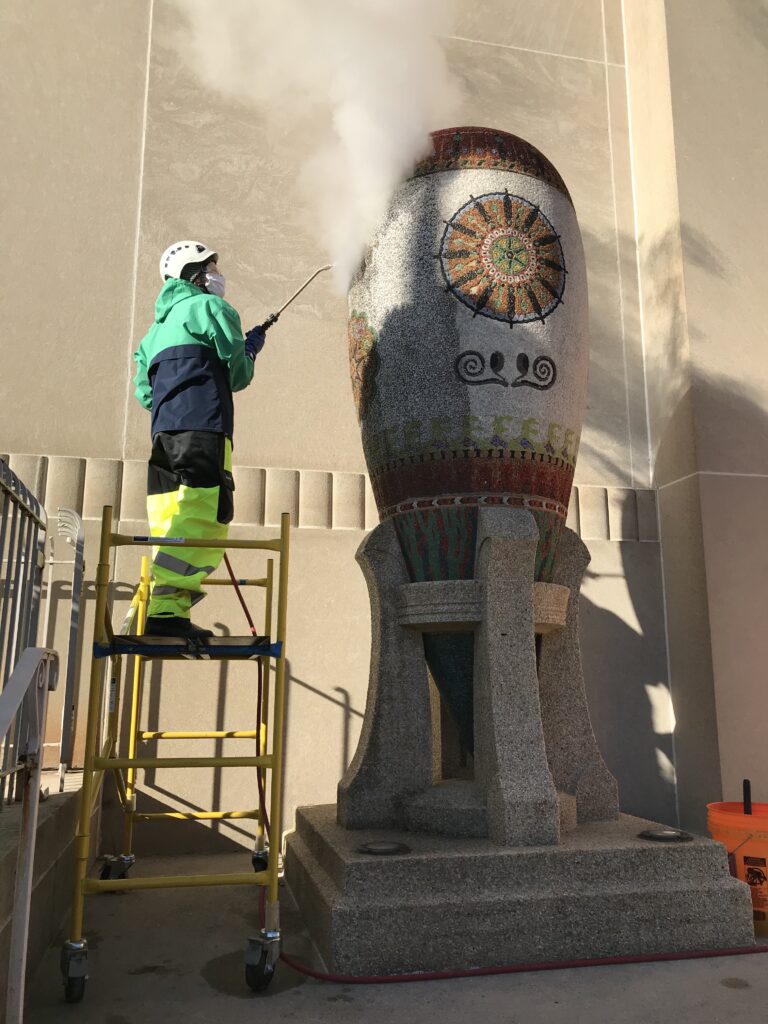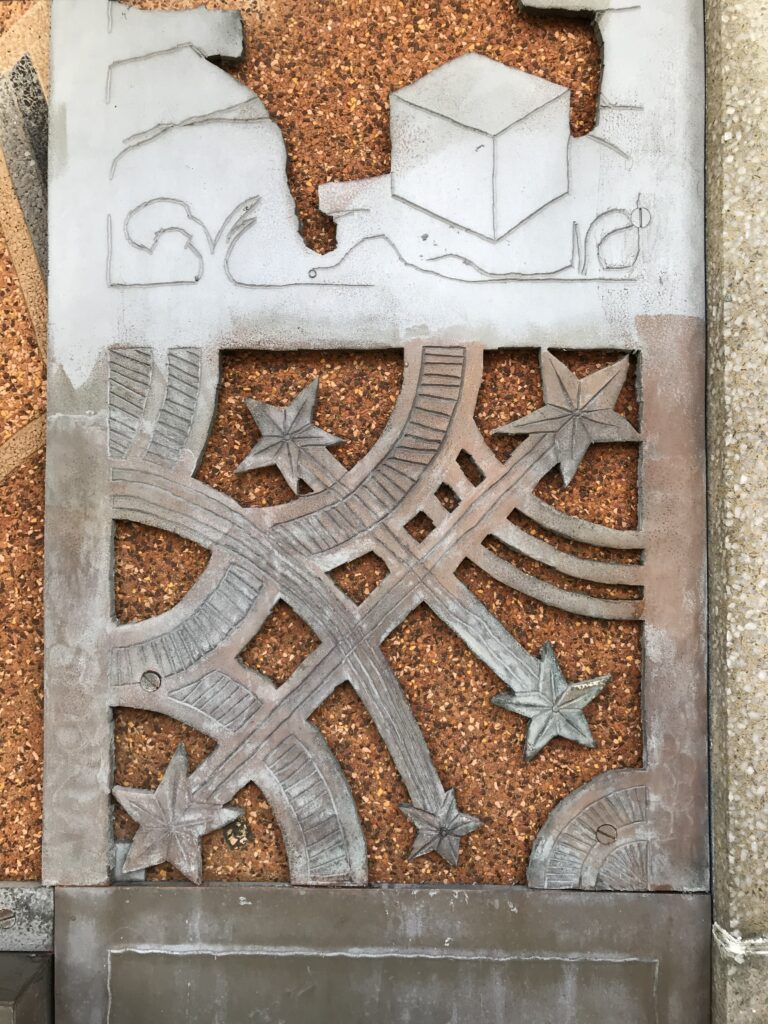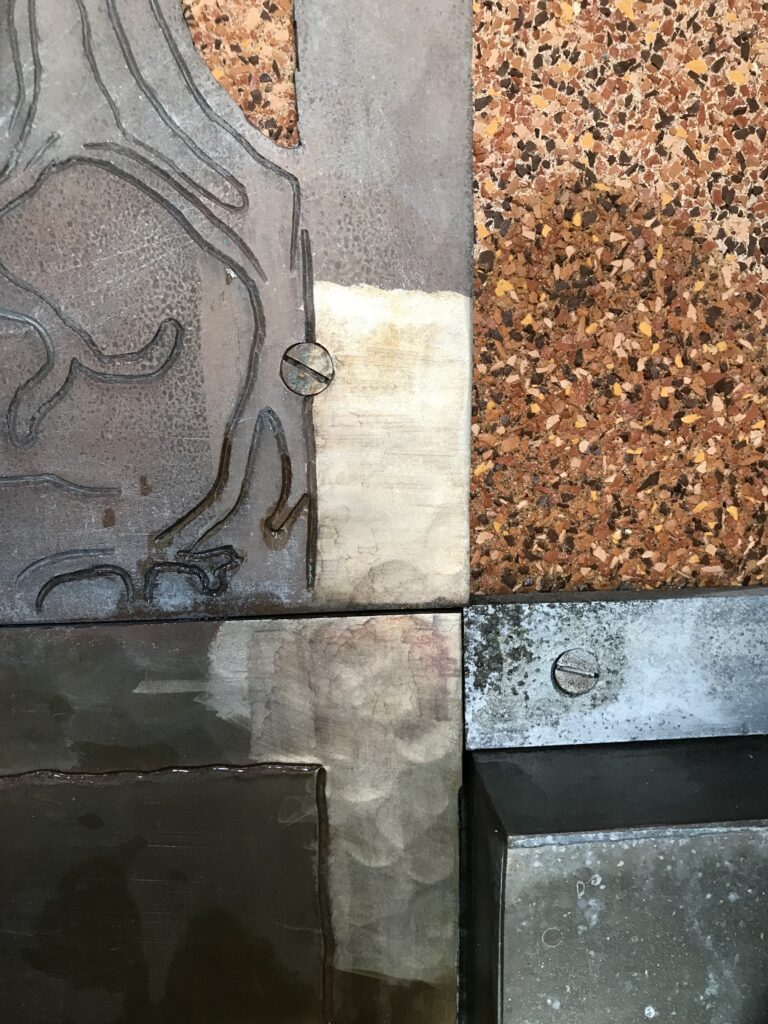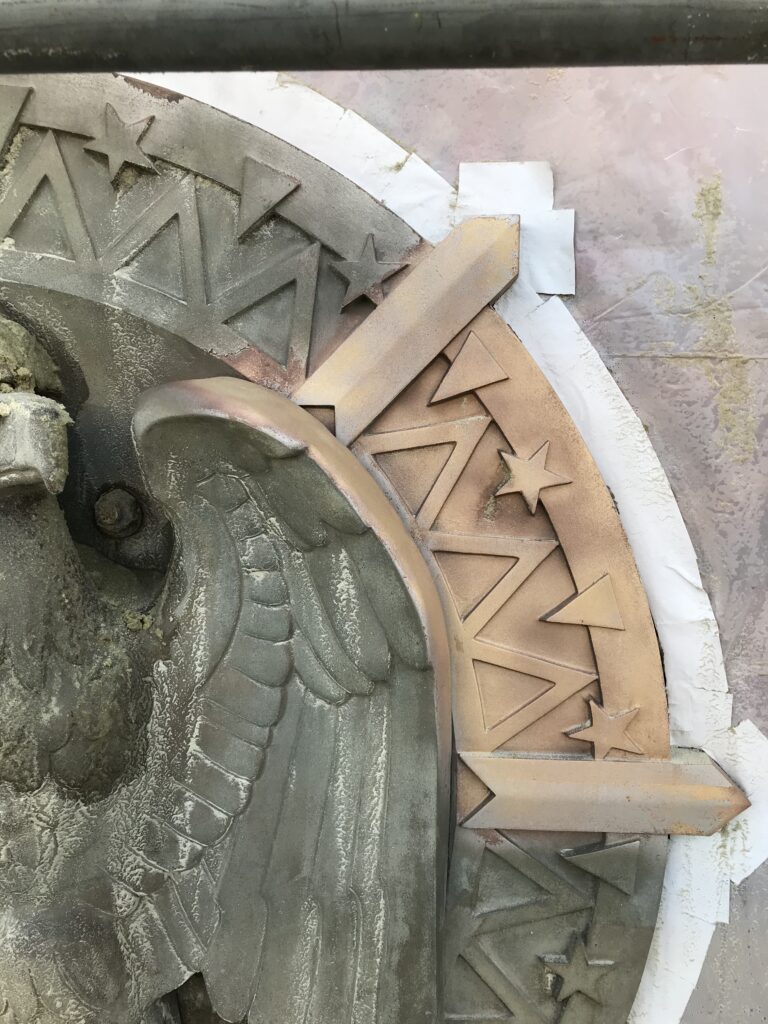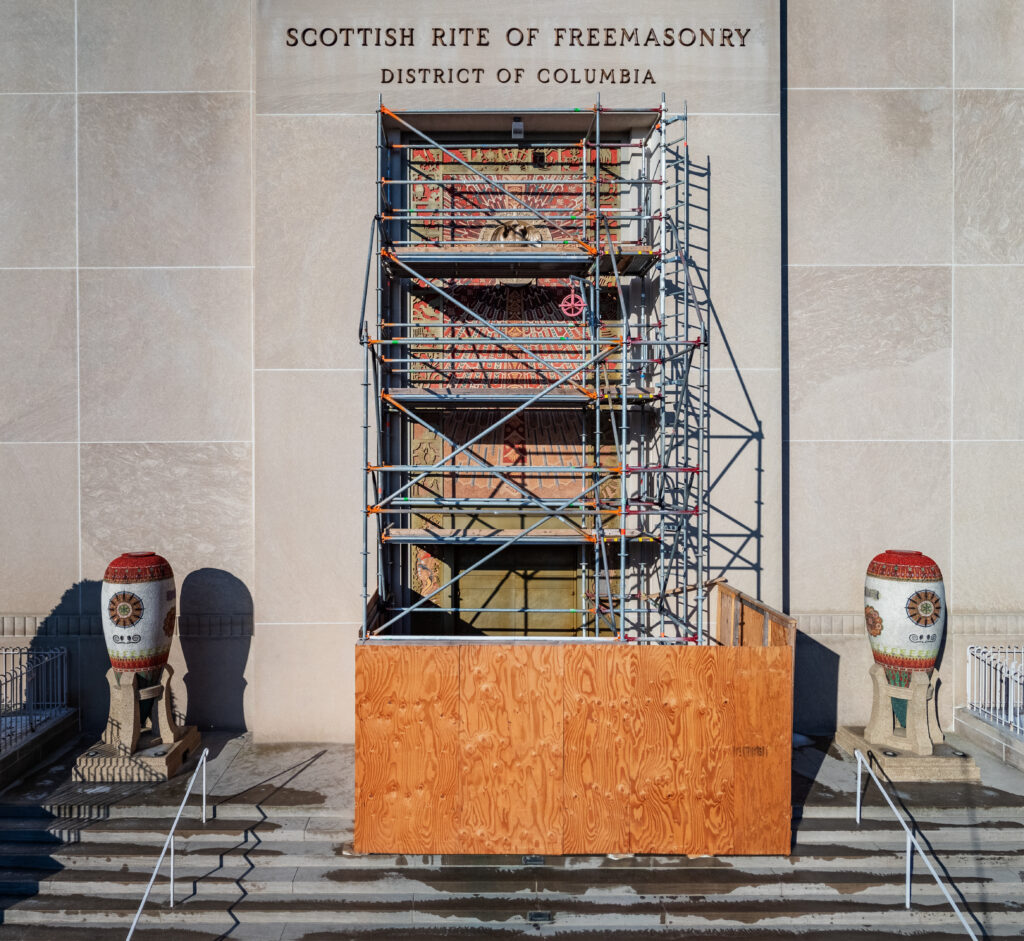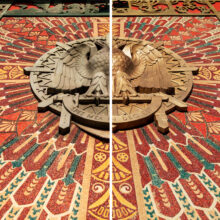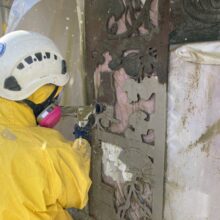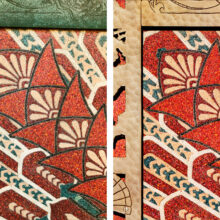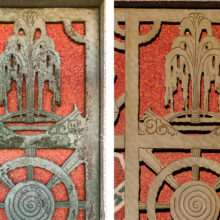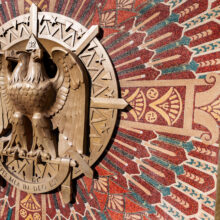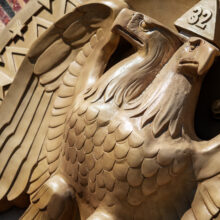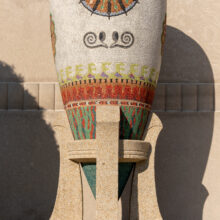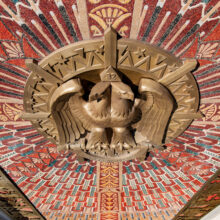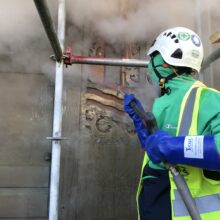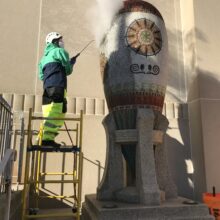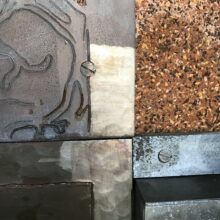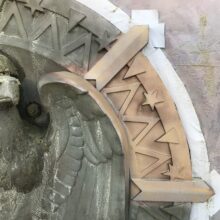DC Scottish Rite Temple Doors
The DC Scottish Rite Temple (2800 16th St) was built in 1939 when the Freemasons of The House of the Temple (1733 16th st) felt they had outgrown their space. This newer temple is much simpler than the previous one. The main façade contains only 33 slabs of Indiana Limestone, about nine feet square and 6 tons each. The lintel over the main portal (weighing about 38 tons) is said to be the largest face area stone ever quarried in the United States. It sits above bronze doors with an intricate mosaic surround. The building houses a 400 seat auditorium and various meeting rooms for use by the freemasons.
Our team was brought in to perform cleaning, restoration, and coating of the bronze doors and mosaic surrounds at the main entrance of the Scottish Rite Temple.
Their work covered the bronze doors (inner and outer faces and edges), door frames (inner and outer faces and edges), the bronze framing that extends to the top of the entrance, the bronze eagle medallion, and the underlying concrete mosaic. After cleaning, they adjusted and evened the existing patina.
The bronze elements and underlying concrete mosaic were washed with detergents and water before other work, and protection was installed to allow further work on the bronze without damaging the limestone or mosaics. The bronze was cleaned of soiling and loose corrosion using mild abrasive pads and bronze brushes. This will even the existing patina and allow the development of a generally even weathered color. Alternatively, we can clean the bronze of all corrosion/patina using laser ablation which will safely remove all discoloration and produce an even new patina. Alternative pricing is provided for this option.
After cleaning, developed an even-brownish tone on the bronze using chemical patination procedures. The eagle sculpture was similarly treated. The bronze surfaces were washed with an application of BTA 3% corrosion inhibitor and then coated with acrylic lacquer. The thickness of the lacquer was monitored with an ultrasonic gauge to ensure consistancy.
